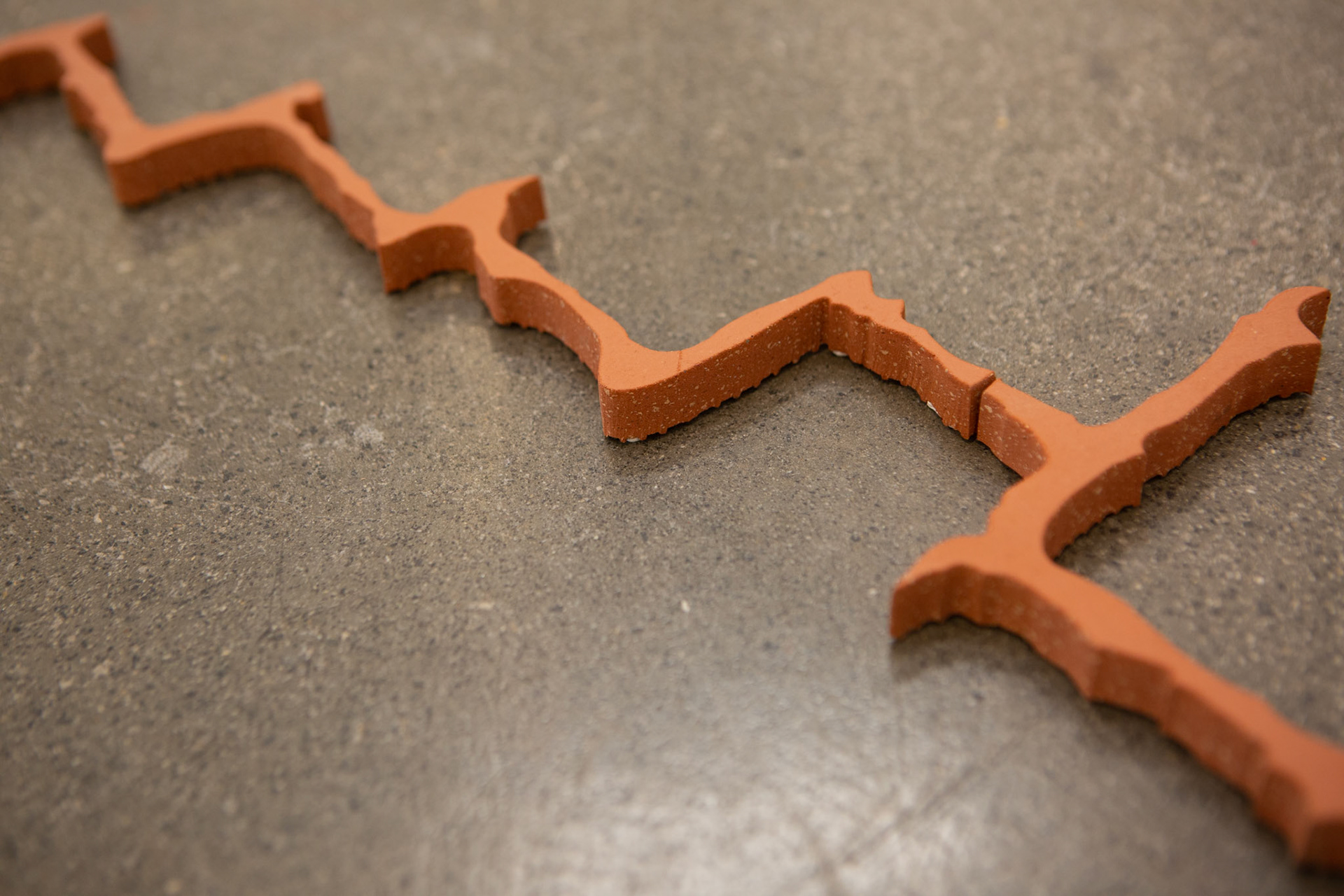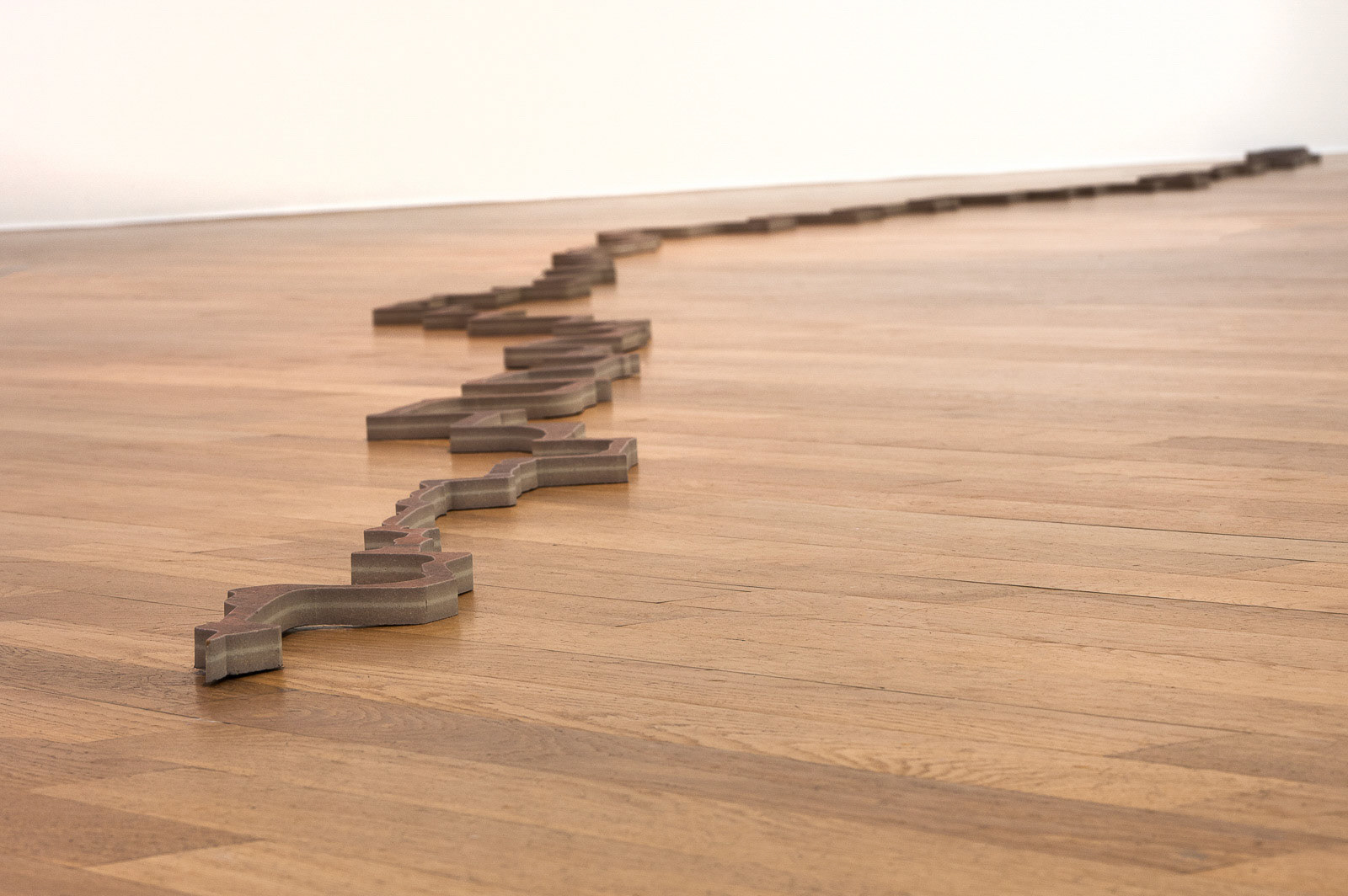Extending like a scar through all three rooms of the exhibition is a flat floor sculpture, a fragmentary line consisting of stoneware slabs shaped in a computer- controlled water-cut procedure. It is easy to overlook the interrupted tracks when one focuses on the artworks hanging
on the wall. There is an everpresent possibility of stumbling over them; the visitor is allowed to step across but not upon them. The work divides the rooms into a here and a there; attention must be paid to it constantly when moving through the exhibition. It is irritating—and this is the very intention. The form of Gekochte Erde is based on the grout-filled gaps between the cobble-stones on the Neumarkt in Dresden, the site of the Frauenkirche where the “fire storm” of the Allies fell in the spring of 1945 and where now, week after week, the supporters of right-wing groups demonstrate. Nadia Kaabi-Linke identifies a direct causal connec- tion here. The visitor does not need to be informed about this mental association but can intuit or sense it upon stepping a further time across the obstructive formation, which can also be read as a fissure running through the entire exhibition.
—Barbara J. Scheuermann












